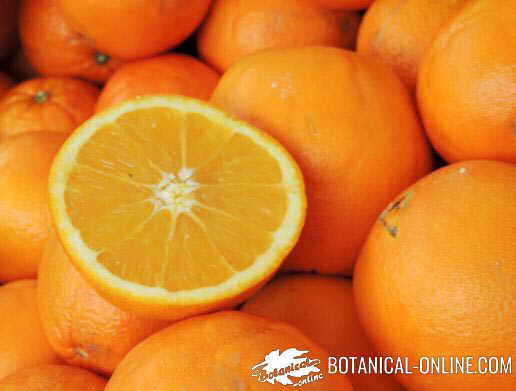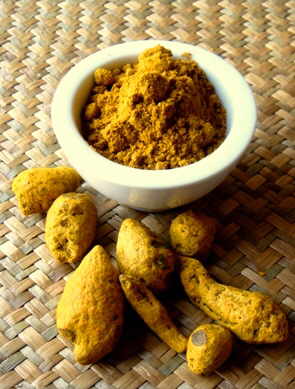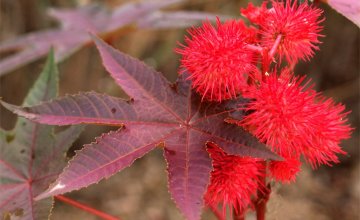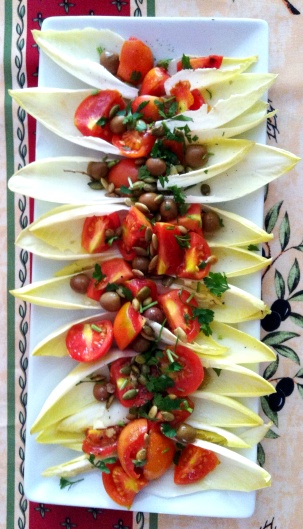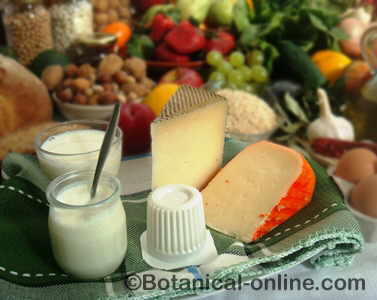Contents
- 1 Characteristics of bladder campion
- 2 Medicinal and edible properties of bladder campion
- 2.1 Health benefits of Silene vulgaris
- 2.2 Bladder campion properties as edible wild plant
- 2.3 How is campion consumed?
- 2.4 What flavor does bladder campion have?
- 2.5 Where to buy bladder campions?
- 2.6 Silene vulgaris against food globalization
- 2.7 Other uses of bladder campion
- 2.8 Toxicity, contraindications and side effects of bladder campion
Characteristics of bladder campion
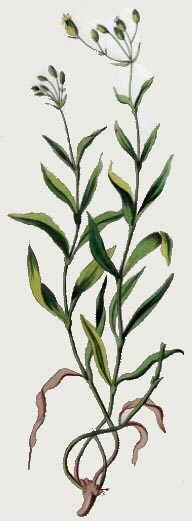
Common English name: Bladder silene, Bladder campion, Cowbell, Rattleweed, Maiden’s-tears, Maidenstears
Scientific name: Silene vulgaris (Moench) Garcke
– Taxonomic synonyms: Silene latifolia (Mill.) Britten & Rendle, Oberna commutata (Guss.) Ikonn., Silene cucubalus Wibel, Silene inflata Sm.
Family: Caryophyllaceae
Habitat: In grasslands, dry sandy places, roads, orchards, vacant lots, walls
Botanical characteristics of Silene genus
Bladder campion is a plant of the Caryophyllaceae family, the same botanical family to which carnations we all know belong. In fact, if we look, bladder campions stems and leaves have a very similar color to those of carnations.
The genus of Silene plants has more than thirty species, but all have a common denominator: flowers with five petals of delicate appearance, usually toothed, a swollen chalice and thin elongated leaves, lanceolate.
Perhaps the most significant plant within the Silene genus is the so-called Silene vulgaris, bladder campion, an edible plant well known in the field, and which, together with the asparagus, is one of those that are usually harvested with more profusion in our environment .
Description of the plant
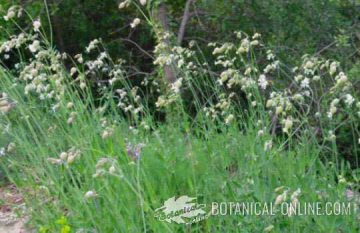
Bladder campion is an annual plant, which disappears at the end of autumn and sprouts again the following year. It is a plant resistant to the oscillation of temperatures, being one of the first herbs that begin to sprout in spring.
Leaves entire, with hairy margin, lanceolate and pointed. Flowering occurs at the end of spring. Its flower stems can reach about 60 cm in height and the pendulous flowers stand out not for their petals, but for the balloon-shaped swollen chalice, from which the five white bilobate petals scarcely protrude.
Game about “popping the campion flowers”
Bladder campion flowers have always been used as a game for children (and not so children), consisting of putting the flower on the palm of one’s hand and, by giving a blow with the other palm, you make the globose calyx of the flower to burst, as if it were a small firecracker.
This game is the reason why this plant sometimes receives the name of explotaculos, pistones o tiratiros. ( In English something like: bottom-exploding, pistons or shots-shooters
How to gather this plant
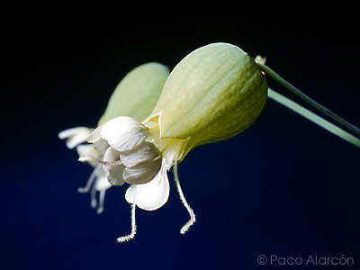
We find bladder champion plants on the edges of roads, orchards, in vacant lots, abandoned fields, between the stones of the walls, …
It can grow isolated, but it generally lives in more or less large colonies, with other plants of the same species. This facilitates their identification, especially when they are small and tender, which is when they must be collected to eat them.
They can be recognized because, at that stage of their development, measuring a span, they seem like small carnations.
Bladder campion flowers, when dried, can be used for very decorative dried flowers bouquets.
Origin of the name Silene
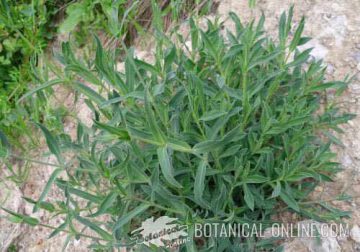
It seems that the origin of the name Silene derives from Silenus, a character from Greek mythology, one of the satyrs who became master of Dionysus, and who was characterized by his taste for good living and good drinking, two habits that ended Modeling his body with rounded shapes (this is reflected in the paintings and sculptures).
It is assumed that when someone scientifically baptized bladder campion, the rounded shape of the chalice of this flower, must have reminded Silenus .
Why is it called colleja in Spanish?
As far as the denomination of “colleja” is concerned, we all know that in Spanish a colleja means a blow, more or less strong, in the neck. Apparently, it has nothing to do with a plant, does it?
The similarity of a blow to the neck (“colleja”) with the plant Silene vulgaris is something that gives rise to many theories. We have ours, and it consists of a hypothetical association of the outburst or crack that we hear when hitting the back of the head, with the noise produced by the explosion in the hand of the swollen chalice of the campion. As in the children’s game that we mentioned before. In fact, there is a great similarity of sound between both actions.
Composition of bladder campion
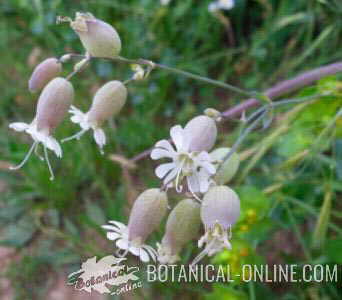
Silene vulgaris has a nutritional composition similar to that of other leafy vegetables such as borage or dandelion. It consists mainly of:
- Water (88%)
- A little amount of carbohydrates (3%)
- It is rich in fiber (3%)
- A certain amount of protein (3%)
- and has virtually no fat (less than 1%) .
What stands out most of this plant is its content in vitamin C, chlorophyll, carotenes and other phytochemical compounds with health properties.
Medicinal and edible properties of bladder campion
Health benefits of Silene vulgaris
This is a plant that has been consumed for many years as a common vegetable, although over time, it has been displaced from the feed by other more productive plants, as well known as lettuce or Swiss chard.
In Italy, this plant is considered an excellent depurative. Bladder campions are rich in potassium, a mineral with diuretic properties, to stimulate the production of urine and therefore the elimination of waste from the body.
They are also very rich in powerful antioxidants such as carotenes and chlorophyll. These principles have properties to purify the liver as they intervene in its detoxification processes. A dish of bladder campion also supposes a good contribution of calcium and magnesium.
Bladder campion properties as edible wild plant
The colleja is known mainly for its applications as an edible wild plant. As such, it is collected at the beginning of spring, when it begins to sprout and before it blossoms, to eat it in salads and in different recipes.
They are a very appreciated food in the whole Mediterranean region, where they are eaten raw, boiled or cooked, in different stews.
A traditional dish with this plant is the “soupe de chalet”, a French dish , or in the typical wild salads called “misticanza” of the island of Sicily.
How is campion consumed?

It is consumed basically in salads and to make tortillas. They can also be used to accompany cheeses, for gazpacho, to fill a fresh pasta, to prepare empanadas and for crêpes (In Creta bladder campions are consumed in the traditional “pitas”).
We will use only the tips of their tender buds, with their 4 or 6 leaves, because if we cut them from the base, the stems, even being tender, are fibrous and not pleasant to chew.
We can also use them to add to a stew of legumes or a rice paella.
What flavor does bladder campion have?
It is a very soft, non-aromatic herb. It is really a green leafy vegetable. However, it has a little leaf, so if you want a good portion, you will have to collect a considerable bunch.
It is a very appreciated plant for its pleasant and fine flavor, which had been present as a vegetable in all the houses.
Where to buy bladder campions?
Currently it is still possible to find it in some markets, although its price is usually higher than that of common vegetables.
The most likely way to consume this plant is to gather it in its wild state or cultivate it in the family garden. In case of wild plants gathering, it is recommended to consult these norms for the collection of edible wild plants.
Silene vulgaris against food globalization
Bladder campion and other wild plants that are now known as edibles have been part of traditional cuisine since antiquity, and arguably their consumption dates back to the origin of man.
Reintroducing the consumption of campions and other wild plants in the kitchen is to recover a vestige of gastronomic history, close to being lost and being buried by food globalization.
Other uses of bladder campion
It is known that the adult plant is rich in saponins and has been used to make soap, similar to soapwort (Saponaria officinalis).
Toxicity, contraindications and side effects of bladder campion
There are no data on the toxicity of this plant in the botanical and ethnobotanical treaties consulted. There are also no reports of whether it has toxic principles in the scientific literature, nor have cases of intoxication caused by ingestion of the plant been documented in these same sources.
Therefore, their traditional use as food, and the absence of data on their toxicity, seem to be the main endorsements of bladder campion edibility.
![]() More information on edible wild and medicinal plants
More information on edible wild and medicinal plants
7 July, 2025

